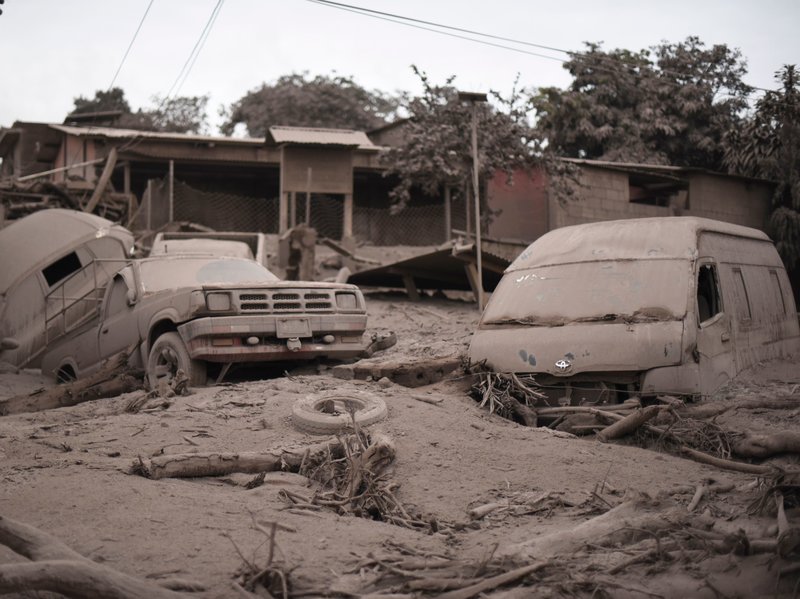The volcano spewed billowing clouds of ash into the sky — and more dangerously, sent a deadly mix of lava, pumice and gas speeding toward villages on Sunday. Authorities fear the death toll may rise.
The known death toll for the eruption of Guatemala’s Volcano of Fire has taken a sudden jump upward.
The director of Guatemala’s National Institute of Forensic Science said that 62 bodies have been recovered following the eruption.
Fanuel Garcia said Monday that only 13 of those bodies have so far been identified. The bodies were recovered in the hamlets of Los Lotes and El Rodeo.
The head of the country’s disaster agency had previously put the death toll at 33, but warned it would go higher.
The volcano west of Guatemala City staged and explosive eruption Sunday, burying surrounding hamlets in hot ash and mud that gave residents on the volcano’s flanks little time to escape.
Around midday Sunday, the bright blue sky less than 30 miles southwest of Guatemala City darkened to a billowing gray — and with a vicious rumble, one of Central America’s most active volcanoes stirred to life again. Mount Fuego spewed ash and lava from its heights, blanketing the lands nearby and leaving at least 25 people dead.
Many people were injured and, with others still missing, Guatemalan authorities fear the death toll may rise further as the aftermath from the sudden eruption becomes clear. More than 3,200 people have evacuated the area.
“It is too early to know the full extent of the damage,” President Jimmy Morales said in a statement posted to Facebook. And, as rescue workers sought survivors in the pale gray just miles from his presidential palace in the capital, Morales added that it is a time for Guatemalans to come together in “unity, prayer and solidarity.”
He has declared three national days of mourning.
Guatemala’s national disaster response agency, CONRED, said overnight that the eruption lasted more than 16 hours before finally quieting. The agency described the substance ejected by the volcano as a pyroclastic flow — defined by the U.S. Geological Survey as “a high-density mix of hot lava blocks, pumice, ash and volcanic gas.

The USGS notes that pyroclastic flows can reach temperatures of up to 1,300 degrees Fahrenheit and reach speeds of more than 50 mph, giving them the ability to “knock down, shatter, bury or carry away nearly all objects and structures in their path.”
“It’s a river of lava that overflowed its banks and affected the El Rodeo village. There are injured, burned and dead people,” CONRED General Secretary Sergio Cabañas said on radio.
Eddy Sánchez of the country’s National Institute of Seismology, Volcanology, Meteorology and Hydrology told the newspaper Diario de Centro América that thick black smoke and ash also fell for miles around the volcano — including in San Lucas, Antigua Guatemala, Alotenango, Chimaltenango and Zaragoza.
Most of the victims reported initially were from the village of El Rodeo, according to Guatemala’s El Periódico newspaper.
“The only thing we could do was run with my family and we left our possessions in the house,” El Rodeo resident Efrain Gonzalez told the BBC. “Now that all the danger has passed, I came to see how our house was — everything is a disaster.”
Not everyone was so lucky. Pyroclastic flows move quickly, and in Fuego’s case, the fiery rivers loosed by Fuego surprised many victims with their speed.
“Not everybody could escape,” said another El Rodeo resident, Consuelo Hernández, according to El Periódico. She spoke to a TV crew as she walked down road loud with sirens, dazed and as layered in ash as the busy roadway she was crossing. “I think they were buried.”
No comments:
Post a Comment